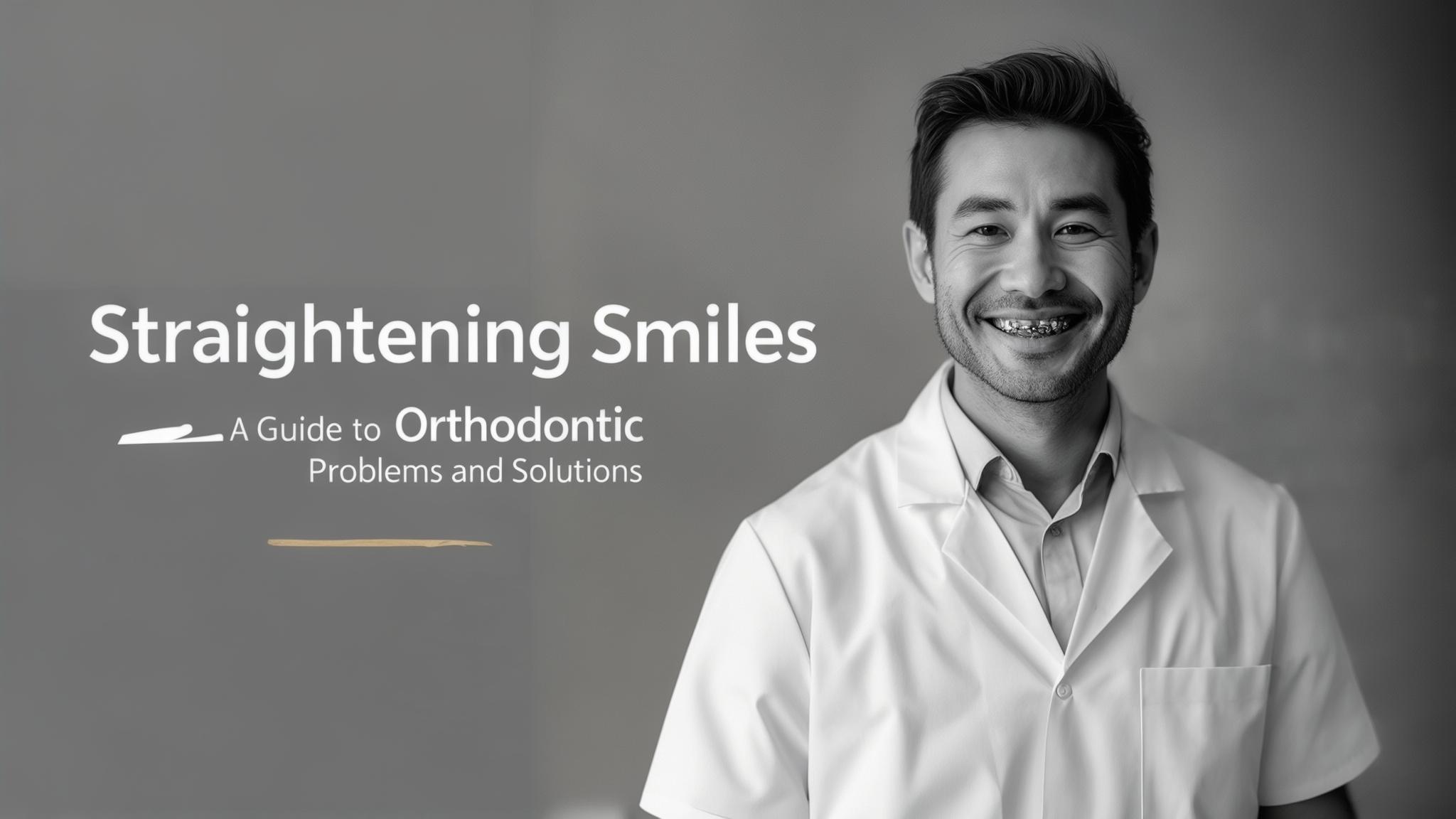Orthodontics: A Path to a Healthier, More Confident Smile
Orthodontics is a specialized branch of dentistry that focuses on diagnosing, preventing, and treating dental and facial irregularities. It plays a crucial role not only in enhancing the aesthetics of a smile but also in improving overall dental health. Misaligned teeth and jaws can lead to a variety of issues, from difficulty in cleaning teeth properly to serious bite problems. In this article, we'll explore some of the most common orthodontic problems and how they are effectively treated.
Common Orthodontic Problems
Overbite
An overbite occurs when the upper front teeth overlap significantly over the lower front teeth. This condition is often hereditary but can also be caused by habits such as thumb sucking or prolonged use of a pacifier during childhood. Symptoms of an overbite include wear on the lower teeth, jaw pain, and sometimes difficulty in speaking or chewing. Left untreated, it can contribute to gum damage and increased risk of tooth decay.
Underbite
An underbite is characterized by the lower teeth extending past the upper front teeth. This can result from genetic factors, such as abnormal growth of the jawbones, or from childhood habits like thumb sucking. Symptoms include difficulty biting and chewing food, speech challenges, and an increased risk of tooth wear. An underbite can also lead to jaw pain and temporomandibular joint (TMJ) disorders.
Crowding
Crowding happens when there is not enough space in the jaw for all the teeth to fit normally. This can be due to genetic factors or early loss of primary teeth. Symptoms often include crooked or overlapping teeth, which can make oral hygiene difficult and increase the risk of cavities and gum disease.
Spacing
Spacing issues occur when there are gaps or spaces between teeth. This condition can be caused by missing teeth, small teeth, or a large jaw. Spacing can affect the alignment of teeth and lead to issues with bite and speech. It may also increase the risk of gum problems as the gaps can trap food particles and plaque.
Crossbite
A crossbite is when one or more of the upper teeth bite inside the lower teeth. This can affect either the front or the sides of the mouth. Causes include genetic factors and delayed loss of primary teeth. Symptoms may include tooth wear, gum recession, and jaw discomfort. If untreated, a crossbite can lead to asymmetrical jaw growth.
Open Bite
An open bite is a condition where the upper and lower teeth do not touch when the mouth is closed. This can be due to habits like thumb sucking or tongue thrusting. Symptoms include difficulty biting and chewing, speech issues, and sometimes a protruding tongue. An open bite can affect the appearance of your smile and lead to uneven tooth wear.
Diagnosing Orthodontic Problems
Importance of Early Diagnosis
Early diagnosis of orthodontic problems is essential for effective treatment. Identifying issues early can prevent more severe complications and reduce the need for more invasive treatments later on.
Tools and Techniques
Orthodontists use various tools to diagnose problems:
- Clinical Examination: A thorough examination of the teeth and jaws.
- X-rays: Provide detailed images of the teeth and jawbone structure.
- Photographs: Help in assessing the alignment of the teeth and facial symmetry.
- Dental Impressions: Create a model of the teeth to plan the treatment.
Role of Orthodontists
Orthodontists are dental specialists trained to diagnose and treat dental and facial irregularities. They play a vital role in ensuring that patients receive a comprehensive treatment plan tailored to their specific needs.
Treatment Options for Orthodontic Problems
Braces
Braces are the most common orthodontic treatment. They come in several types:
- Metal Braces: Traditional and highly effective.
- Ceramic Braces: Less visible than metal braces.
- Lingual Braces: Placed behind the teeth, making them invisible from the front.
Braces work by applying continuous pressure to move teeth into the desired position over a period of time, typically ranging from one to three years.
Clear Aligners
Clear aligners are a popular alternative to braces. They are nearly invisible and can be removed for eating and cleaning. Aligners work by gradually shifting teeth into place and are usually worn for about 20-22 hours a day. Treatment duration varies but typically ranges from several months to a couple of years.
Retainers
After braces or aligners, retainers help maintain the new position of the teeth. There are two main types:
- Fixed Retainers: Bonded to the back of the teeth.
- Removable Retainers: Can be taken out for cleaning.
Other Treatment Options
In some cases, additional treatments may be necessary:
- Tooth Extraction: Sometimes needed if there is severe crowding.
- Jaw Surgery: For severe misalignments that cannot be corrected with braces alone.
- Palatal Expanders: Used to widen the upper jaw to correct crossbites or crowding.
The Orthodontic Treatment Process
Initial Consultation
During the initial consultation, the orthodontist will discuss your concerns and goals. This is an opportunity to understand the treatment process and ask any questions you might have.
Treatment Planning
Based on the diagnosis, a customized treatment plan is created. This includes setting a timeline and selecting the appropriate treatment options to achieve the best results.
Regular Adjustments
Follow-up appointments are crucial for monitoring progress and making necessary adjustments to braces or aligners.
Completion of Treatment
Once treatment is complete, appliances are removed, and retainers are provided to maintain the new alignment. Regular check-ups ensure that your new smile remains healthy and aligned.
Conclusion
Orthodontic problems, while common, can significantly impact dental health and self-confidence. With a variety of treatment options available, there is a solution for nearly every orthodontic issue. Seeking professional orthodontic care is the first step towards a healthier, more confident smile. If you suspect any orthodontic problems, consult an orthodontist for a personalized assessment and treatment plan tailored to your needs. Your journey to a beautiful smile is just a consultation away!

